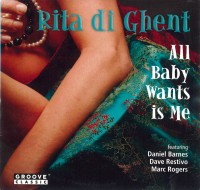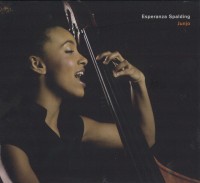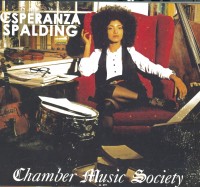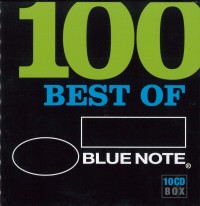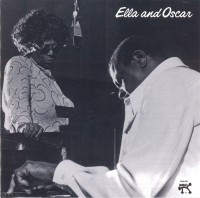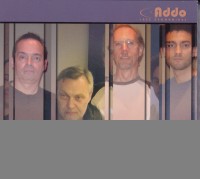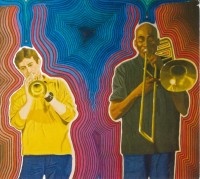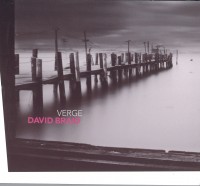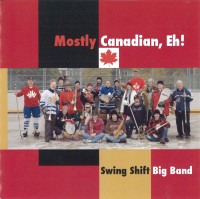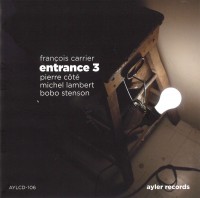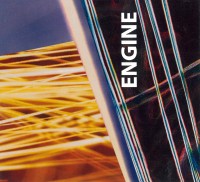Accommodating and adaptable improvising musicians from the Netherlands are as open to out-of-country influences as working with players from different countries in Holland or abroad. Confident in their own skills, they see non-local musicians’ participation as additions to their music, not competition. These beliefs characterize two ostensibly Dutch ensembles in concert in Toronto this month: The Ex with Brass Unbound is presented by the Music Gallery at Lee’s Palace on May 18; while Ig Henneman’s Kindred Spirits Sextet is at Gallery 345 May 19. Violist Henneman’s combo includes two Canadians, pianist Marilyn Lerner and clarinettist Lori Freedman plus German trumpeter Axel Dörner. Meanwhile the Brass Unbound, working with the guitar-heavy, Dutch anarchistic punk-jazzers The Ex, is made up of Swedish saxophonist Mats Gustafsson, American saxophonist Ken Vandermark and Dutch trombonist Wolter Wierbos. A careful listen to some of these players’ own CDs demonstrates the sort of adaptability that characterizes these Dutch-centred combos in general.
 A series of duos, Walter Wierbos - Deining (DolFijn Records 02 www.wolterwierbos.nl) is most intuitive when the trombonist’s rugged and multiphonic timbres stack up against those from the reeds of Ab Baars, who coincidentally is a member of the Henneman band playing the following night. On Buitengaats, for instance, Baars’ altissimo irregularly vibrated warbling and fluttering cross tones come up against bugle-like chromaticism from the trombonist. This emphasis towards linear connections works even more effectively on Op de Warf, as the play-anything Bennink works his way staccatissimo all around his kit – and the nearby floor – while tooting a harmonica and whistle blowing. Right beside him, and similarly intense is Wierbos using elephantine brays, capillary burbles and rubato snorts to eventually shift the tempo so the two end up swinging with identical microtones.
A series of duos, Walter Wierbos - Deining (DolFijn Records 02 www.wolterwierbos.nl) is most intuitive when the trombonist’s rugged and multiphonic timbres stack up against those from the reeds of Ab Baars, who coincidentally is a member of the Henneman band playing the following night. On Buitengaats, for instance, Baars’ altissimo irregularly vibrated warbling and fluttering cross tones come up against bugle-like chromaticism from the trombonist. This emphasis towards linear connections works even more effectively on Op de Warf, as the play-anything Bennink works his way staccatissimo all around his kit – and the nearby floor – while tooting a harmonica and whistle blowing. Right beside him, and similarly intense is Wierbos using elephantine brays, capillary burbles and rubato snorts to eventually shift the tempo so the two end up swinging with identical microtones.
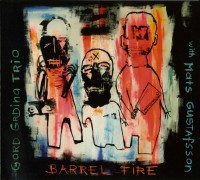 Baritone and tenor saxophonist Mats Gustafsson, another of the Unbound hornmen, has had even more experiences trading licks with rock-influenced groups – even in Canada. As a matter of fact, Barrel Fire (Drip Audio DA00651 www.dripaudio.com) captures a raw face-off between the reedist and the Vancouver-based members of guitarist Gord Grdina’s Trio, including bassist Tommy Babin and drummer Kenton Loewen. Unfettered in his playing during all of the CD’s five tracks, Gustafsson snorts, slurs, stutters and spits out elasticized, almost never-ending glottal punctuation. Meanwhile Grdina counters – as the Ex’s guitarists do as well – with distorted reverb, harsh downstrokes and staccato bent notes as Loewen’s ferocious backbeat encompasses ruffs, rolls and ricochets. Bringing the same sort of nephritic gut-wrenching blasts to Enshakoota, a traditional Iraqi tune mostly limited to the splayed and coiled runs Grdina picks on oud, the saxophonist’s stentorian tones and the others’ contrapuntal responses also get an extended showcase on Burning Bright. As Babin’s fingers slither along his strings so that the notes fairly glisten and the drummer pounds and smashes relentlessly while swishing his cymbals, ringing guitar chords deconstructed with reverb and distortion are matched polyphonically with diaphragm-vibrated split tones and triple-tonguing from the saxman. Gustafsson’s ejaculated shrills and shaking vamps, Grdina’s skyward-chiming chording plus Loewen’s backbeat come as close to a definition of Heavy Metal Jazz as can be imagined.
Baritone and tenor saxophonist Mats Gustafsson, another of the Unbound hornmen, has had even more experiences trading licks with rock-influenced groups – even in Canada. As a matter of fact, Barrel Fire (Drip Audio DA00651 www.dripaudio.com) captures a raw face-off between the reedist and the Vancouver-based members of guitarist Gord Grdina’s Trio, including bassist Tommy Babin and drummer Kenton Loewen. Unfettered in his playing during all of the CD’s five tracks, Gustafsson snorts, slurs, stutters and spits out elasticized, almost never-ending glottal punctuation. Meanwhile Grdina counters – as the Ex’s guitarists do as well – with distorted reverb, harsh downstrokes and staccato bent notes as Loewen’s ferocious backbeat encompasses ruffs, rolls and ricochets. Bringing the same sort of nephritic gut-wrenching blasts to Enshakoota, a traditional Iraqi tune mostly limited to the splayed and coiled runs Grdina picks on oud, the saxophonist’s stentorian tones and the others’ contrapuntal responses also get an extended showcase on Burning Bright. As Babin’s fingers slither along his strings so that the notes fairly glisten and the drummer pounds and smashes relentlessly while swishing his cymbals, ringing guitar chords deconstructed with reverb and distortion are matched polyphonically with diaphragm-vibrated split tones and triple-tonguing from the saxman. Gustafsson’s ejaculated shrills and shaking vamps, Grdina’s skyward-chiming chording plus Loewen’s backbeat come as close to a definition of Heavy Metal Jazz as can be imagined.
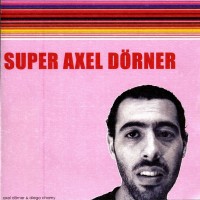 If Gustafsson’s altissimo cries and renal grunts define unfettered excesses of one sort of Free Improvisation, then Kindred Spirit Axel Dörner takes the opposite track with reductionist microtones, which favour sound exploration over melody. A convincing illustration of this occurs on the appropriately titled Super Axel Dörner (Absinth Records 018 www.absinthrecords.com), with his duo partner Argentinean percussionist Diego Chamy. It’s near a solo showcase since Chamy spends more time mumbling and vocalizing while distractedly hitting percussion instruments than laying down a beat. To compensate the trumpeter pushes grainy, flat lines through his open horn without moving his valves so that these textures parallel, rather than blend with Chamy’s sonic expressions. With intermittent noises that sound variously like nakers being hit, the whirl of chukka sticks and the bouncing of a stick on cymbal tops from the percussionist – as well as rapid-fire Spanish statements – Dörner has plenty of scope to decorate the sonic grisaille in such a way that harmonic and rhythmic contours are nearly visible. At one point he alternates bright, open-horn blasts with tongue slaps against the mouthpiece, inflating agitato triplets to full-bore whistles. When discord suggests the drummer is eccentrically scrapping a putty knife against the drum’s rims, Dörner livens up the interchange with fortissimo brass blasts, immediately followed by extended circular breathing. This so vibrates the trumpet’s insides that partials and microtones are audible alongside brass textures. It’s this sort of instant response to a non-pulsating beat that serves the trumpeter well in the Henneman sextet where the underlying beat is really supplied by the bass of Wilbert de Joode, who is also featured on more than half of Wierbos’ CD here.
If Gustafsson’s altissimo cries and renal grunts define unfettered excesses of one sort of Free Improvisation, then Kindred Spirit Axel Dörner takes the opposite track with reductionist microtones, which favour sound exploration over melody. A convincing illustration of this occurs on the appropriately titled Super Axel Dörner (Absinth Records 018 www.absinthrecords.com), with his duo partner Argentinean percussionist Diego Chamy. It’s near a solo showcase since Chamy spends more time mumbling and vocalizing while distractedly hitting percussion instruments than laying down a beat. To compensate the trumpeter pushes grainy, flat lines through his open horn without moving his valves so that these textures parallel, rather than blend with Chamy’s sonic expressions. With intermittent noises that sound variously like nakers being hit, the whirl of chukka sticks and the bouncing of a stick on cymbal tops from the percussionist – as well as rapid-fire Spanish statements – Dörner has plenty of scope to decorate the sonic grisaille in such a way that harmonic and rhythmic contours are nearly visible. At one point he alternates bright, open-horn blasts with tongue slaps against the mouthpiece, inflating agitato triplets to full-bore whistles. When discord suggests the drummer is eccentrically scrapping a putty knife against the drum’s rims, Dörner livens up the interchange with fortissimo brass blasts, immediately followed by extended circular breathing. This so vibrates the trumpet’s insides that partials and microtones are audible alongside brass textures. It’s this sort of instant response to a non-pulsating beat that serves the trumpeter well in the Henneman sextet where the underlying beat is really supplied by the bass of Wilbert de Joode, who is also featured on more than half of Wierbos’ CD here.
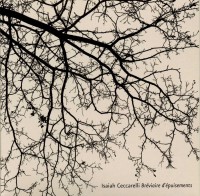 Intertwining horn work is another leitmotif of Henneman’s combo, and in Toronto, Dörner shares the front line with Ab Baars and Montreal’s Lori Freedman. This sort of timbre blending is a regular facet of the bass clarinettist’s performances. It can be sampled on Isaiah Ceccarelli’s dramatic Bréviare d’épuisements (Ambiances Magnétiques AM 199 CD www.actuellecd.com). Much different than the Henneman sextet’s jazz-oriented fare this session amalgamates the ecclesiastical and the atonal. Émilie Laforest and Josée Lalonde intone or vocalize Marie Deschênes’ texts, with distinctive sonic timbres heard alongside these lyric sopranos arising from Freedman’s and Philippe Lauzier’s bass clarinets, Pierre-Yves Martel’s viola de gamba and Ceccarelli’s percussion arsenal. The drummer’s most common strategy involves scrapping cymbals against drum tops, acoustically producing the sort of grinding and buzzing textures that otherwise would be associated with electronics. Meanwhile the cleverly harmonized singers personalize the poetic lyrics while stretching the songs with hocketing pitch variations. One standout passage occurs on La disparation est un mur de plus when the nearly vibrato-less parlando of one vocalist is cushioned by clarinet harmonies. During some pure instrumental passages the similarities between trilling reeds and stroked strings is emphasized as mutual tonal expansions appear to be both notated and aleatoric.
Intertwining horn work is another leitmotif of Henneman’s combo, and in Toronto, Dörner shares the front line with Ab Baars and Montreal’s Lori Freedman. This sort of timbre blending is a regular facet of the bass clarinettist’s performances. It can be sampled on Isaiah Ceccarelli’s dramatic Bréviare d’épuisements (Ambiances Magnétiques AM 199 CD www.actuellecd.com). Much different than the Henneman sextet’s jazz-oriented fare this session amalgamates the ecclesiastical and the atonal. Émilie Laforest and Josée Lalonde intone or vocalize Marie Deschênes’ texts, with distinctive sonic timbres heard alongside these lyric sopranos arising from Freedman’s and Philippe Lauzier’s bass clarinets, Pierre-Yves Martel’s viola de gamba and Ceccarelli’s percussion arsenal. The drummer’s most common strategy involves scrapping cymbals against drum tops, acoustically producing the sort of grinding and buzzing textures that otherwise would be associated with electronics. Meanwhile the cleverly harmonized singers personalize the poetic lyrics while stretching the songs with hocketing pitch variations. One standout passage occurs on La disparation est un mur de plus when the nearly vibrato-less parlando of one vocalist is cushioned by clarinet harmonies. During some pure instrumental passages the similarities between trilling reeds and stroked strings is emphasized as mutual tonal expansions appear to be both notated and aleatoric.
Performances by either the Kindred Spirits, the Ex or both, means exposure to noteworthy soloists as well as well-thought-out group conceptions. Torontonians get a rare chance to hear them both over a two-day period in May.
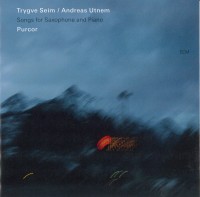 Purcor - Songs for Saxophone and Piano
Purcor - Songs for Saxophone and Piano

